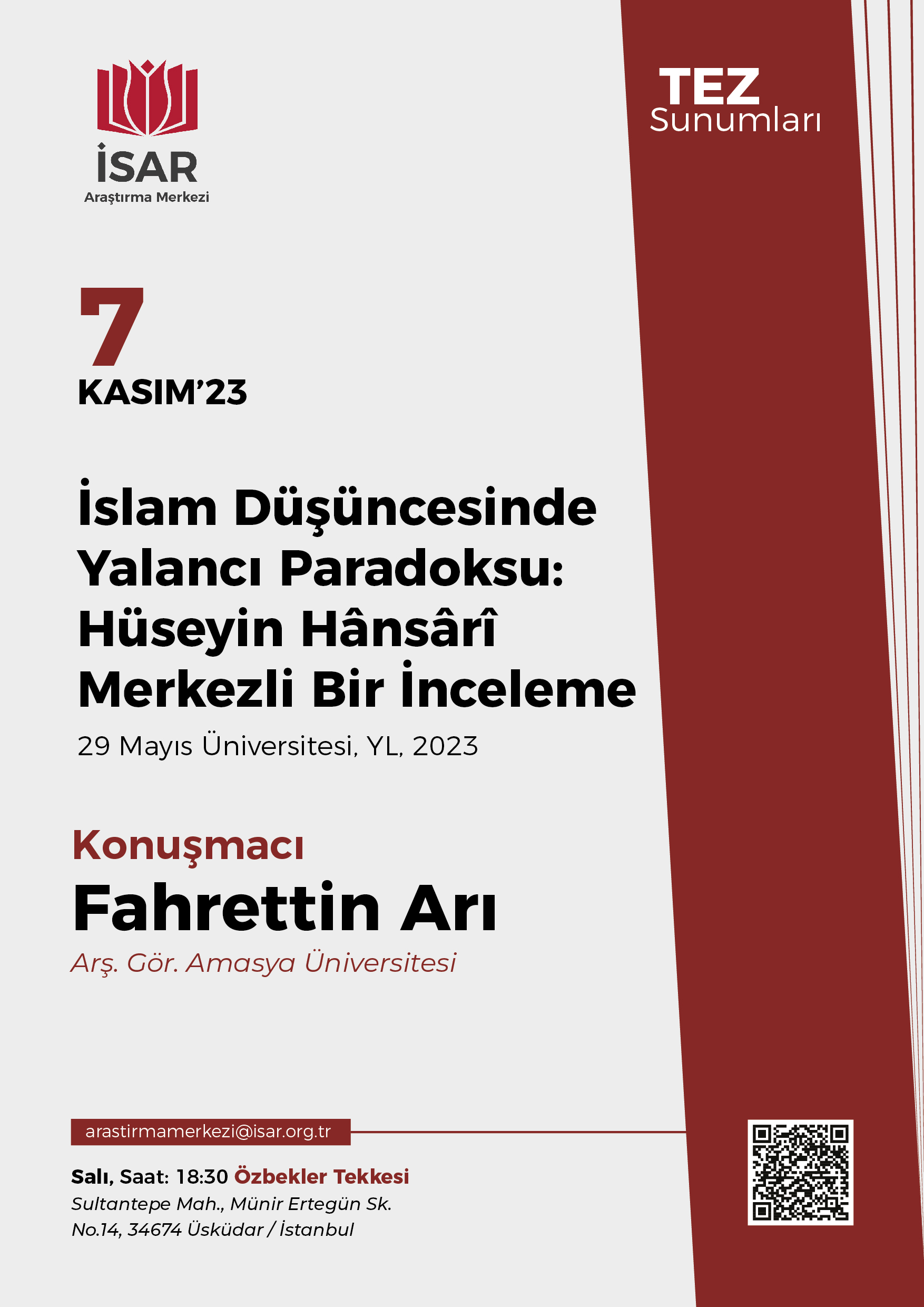This article is translated from its Turkish original. Author of the Turkish original is Abdurrahman Demirkoparan who is a student at 29 Mayıs University Faculty of Theology.
Within the scope of the Thesis Presentation Seminars organized by ISAR Research Center, Fahrettin Arı, who completed his master's studies at Istanbul 29 Mayıs University, Department of Islamic Philosophy, and is also one of ISAR graduates, presented his thesis titled "The Liar Paradox on the Borders of Truth and Contradiction in Islamic Thought: A Study Centered on Âgā Husayn al-Khānsārī's Solution".
Starting his presentation by explaining the definition of the concept of "paradox" and its technical meaning, Arı stated that reasoning that is true in terms of matter and form but leads to a contradictory result is called a paradox, and in this sense, paradoxes are things that make us feel the existence of certain problems in the concepts that the human mind has in its comprehension. Giving Xenon's paradox as an example, Arı stated that the paradox in question is a reasoning that starts from a blur about the concept of "infinity" and includes a questioning about it, and pointed out the need to revise the concept of infinity with this awareness.
The presentation continued with an introduction to the nature of the Liar Paradox. Stating that the paradox in question is one of the most famous semantic paradoxes, Arı emphasized that the paradox is based on the meaning attributed to the predicate of truth. Stating that this paradox brings along certain questions about the values of truth-falsehood and the principle of non-contradiction in terms of being a predicate, Arı continued his speech with an example: When the truth value of the sentence "This sentence is false." is considered, it is seen that there are two options as "true" or "false". If "it is false" is chosen, something true will be said since the predicate of the sentence is also "it is false". In this case, since the predicate of the sentence is predicated of its subject in this way, the statement should be accepted as true. However, at first, the option "it is false" was chosen for the truth value of the sentence. Likewise, in the case where "it is true" is chosen for the truth value of the sentence, a contradiction arises again since the predicate of the sentence is "it is false". Arı said that since there is a contradiction in both cases, the paradox leads us to questions such as "Is there a problem with the notions of truth and falsity in our current understanding?" or "Is there really such a principle as the principle of non-contradiction?" and underlined that paradoxes are seminal problems.
Continuing his presentation by touching upon the different versions and forms of this paradox in the history of thought, Arı briefly mentioned al-Hānsārī's life, his intellectual journey, his scholarly lineage and his works in various fields, and then moved on to the analytical analysis of the paradox and the declaration of the evidence. Afterwards, he evaluated the historical process of the Liar paradox until the 17th century scholar and thinker al-Khānsārī, who constitutes the main framework of the thesis. In his thesis, Arı touched upon the reception of this paradox in names such as al-Ṭūsī, Sayyid Sharīf al-Jurjānī, al-Dawwānī, and Hafrī, the discussions between them, and the solutions they offered, and stated that he traced the answers to questions such as how al-Khānsārī was influenced by these thinkers, which of them he was closer to, how he handled the issue differently from his predecessors, what kind of a solution he offered, and what the meaning of doing such a study in the case of al-Khānsārī.
In the last part of his speech, Arı stated that the Liar paradox has been analyzed in many contexts in Islamic thought, and that he has identified three contexts in which different interpretations of the paradox have emerged. He stated that the first of these contexts is the definition of the informative sentence, the second is the issue of husūn-kubuh, and finally the third is the fallacy section of logic books. In addition to this, Arı underlined that it is at least as important to correctly identify the paradox and the problem in question as it is to offer a solution to this paradox and that this should not be overlooked.












